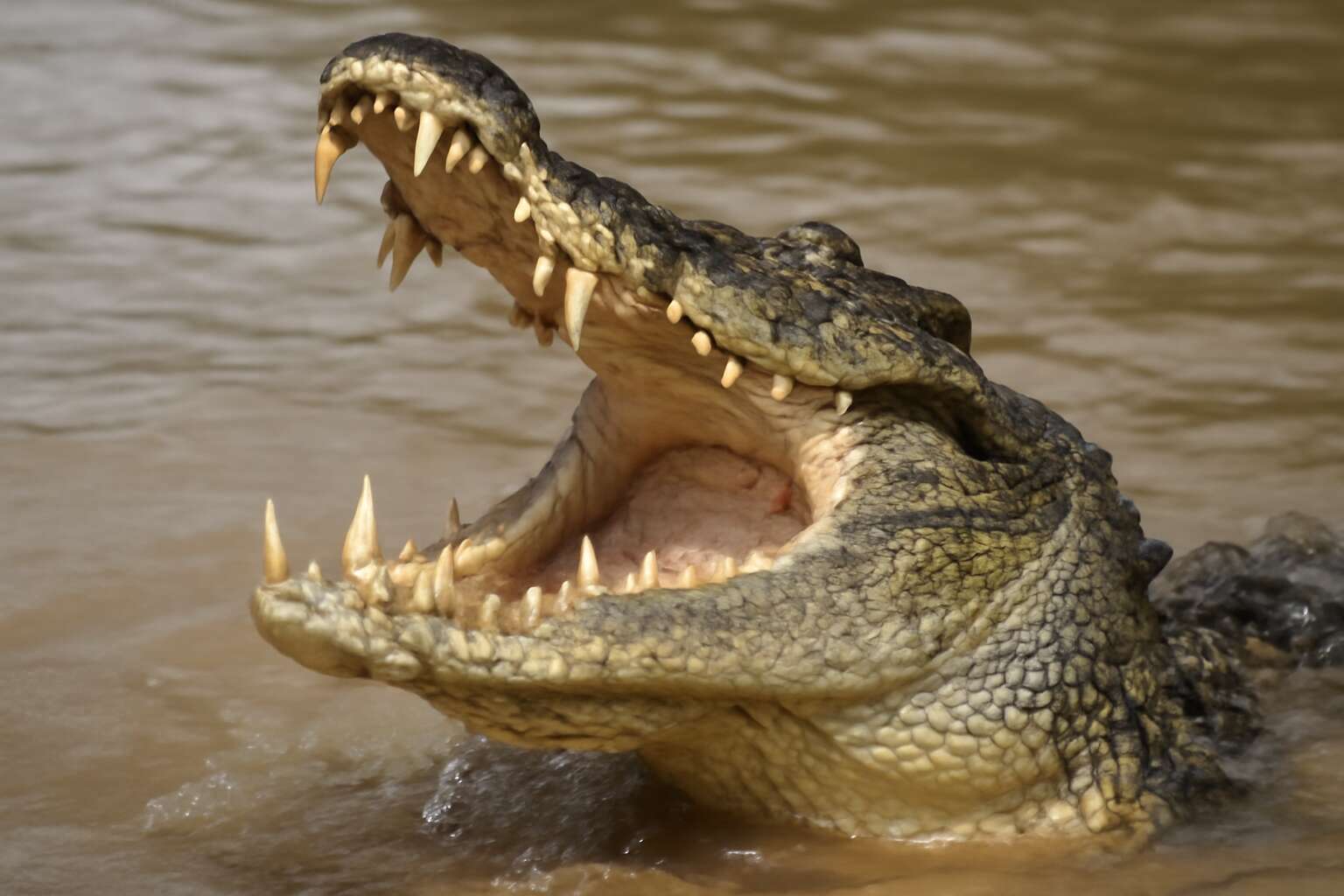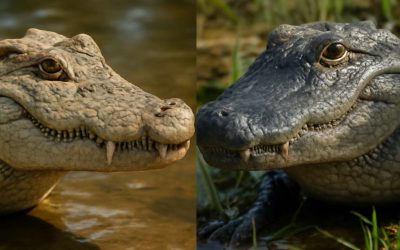Crocodile Diet and Prey Selection
Overview of Crocodile Diet – Types of prey crocodiles typically consume
Watching a crocodile in its natural habitat is like witnessing a masterclass in predatory patience. These ancient reptiles are not just mindless eaters; they have a carefully curated diet that ensures their survival in the wild. So, how crocodile eat? It’s a fascinating process that combines stealth, power, and a surprisingly selective taste for their prey.
Typically, crocodiles feast on a variety of prey that ranges from fish and birds to larger mammals. Their diet varies depending on the age and size of the crocodile, with juveniles often nibbling on insects or small fish, while adults prefer more substantial meals. The preys are often caught with a swift ambush, utilizing their powerful jaws and incredible patience. To give you an idea, their preferred prey includes:
- Fish — the primary source of sustenance for many juvenile crocodiles
- Birds — especially those that come near water’s edge
- Small mammals — like antelope calves or rodents
- Large mammals — including buffalo or even elephants, when the opportunity strikes
Understanding how crocodile eat reveals a creature that is both a cunning predator and a strategic survivor. Their prey selection is a testament to their adaptability and relentless hunting prowess, making them one of the most efficient carnivores lurking in South African waters.
Prey Preferences by Species – Variations among Nile, saltwater, and freshwater crocodiles
When exploring how crocodiles eat, understanding their prey selection offers a window into their ancient, predatory prowess. These formidable reptiles, whether Nile, saltwater, or freshwater crocodiles, demonstrate remarkable dietary adaptability shaped by their environment and size. Each species has carved a unique niche in the aquatic food chain, showcasing distinct prey preferences that highlight their strategic hunting methods.
Nile crocodiles, for instance, are renowned for their opportunistic feeding habits, often targeting large mammals like antelope calves and even young hippos. Saltwater crocodiles, the largest of their kind, exhibit a broader prey spectrum, including fish, birds, and occasionally, sizeable mammals such as water buffalo. Freshwater crocodiles tend to focus on smaller prey, primarily fish and insects, reflecting their more modest size and habitat constraints.
The subtle art of how crocodile eat involves not just raw power but a calculated patience—ambushing prey with stealth, then unleashing a sudden burst of ferocity. Their prey preferences are not solely dictated by availability; they are also a testament to their cunning and adaptability in South African waters. Whether stalking a bird along the water’s edge or lunging at a swiftly darting fish, crocodiles exhibit an intricate balance of restraint and aggression that makes their feeding habits endlessly fascinating.
Habitat Influence on Prey Choice – How environment affects what crocodiles eat
The environment plays a crucial role in shaping how crocodile eat and their prey choices. In South African waters, where ecosystems vary from river deltas to coastal estuaries, crocodiles adapt their diet to the available resources. This flexibility is key to their survival and success as apex predators.
For example, saltwater crocodiles in coastal regions often target a broad spectrum of prey, including fish, birds, and even large mammals like water buffalo. In contrast, freshwater crocodiles in rivers and lakes tend to focus on smaller prey such as fish and insects. This habitat-driven prey selection ensures they maximize their hunting efficiency in different environments.
Prey availability directly influences how crocodile eat, but their strategic hunting methods also reflect their adaptability. They can ambush prey with stealth or launch rapid attacks, depending on the situation. The way crocodiles hunt varies significantly based on their habitat and prey size, revealing a sophisticated approach to feeding that has persisted for millions of years. Understanding these nuances offers deep insight into how crocodile eat habits are closely tied to their environment and prey spectrum.
Hunting Strategies and Techniques
Ambush Predation – How crocodiles lie in wait for prey
In the murky depths of rivers and the shimmering edges of wetlands, crocodiles employ a masterful form of ambush predation that is as ancient as time itself. Their hunting strategy hinges on patience and precision, lying motionless for hours, perfectly camouflaged against the water’s surface—an almost mythical stillness that conceals their formidable presence. When prey unwittingly ventures close enough, the crocodile’s sudden, explosive strike leaves no room for escape.
The technique of ambush predation is a testament to their extraordinary adaptation. Crocodiles often target animals that come to drink, using their powerful jaws to seize prey with a swift, calculated motion. Their ability to remain hidden, blending seamlessly into their surroundings, allows them to maximize their chances of a successful hunt. Observing how crocodile eat reveals a creature that embodies patience and predatory prowess—an ancient predator perfectly attuned to its environment.
Quick Strikes – The mechanics of their swift attack
When it comes to understanding how crocodile eat, the mechanics of their swift attack reveal a predator built for explosive precision. These ancient reptiles rely on lightning-fast movements that seem almost supernatural, a testament to millions of years of evolutionary mastery. Their hunting strategy isn’t just about patience—it’s about delivering a sudden, bone-crunching blow that leaves prey with little chance to escape.
During a strike, a crocodile’s jaw snaps shut with the force of a modern-day wrecking ball, capable of exerting thousands of pounds per square inch. This rapid motion is often so swift that it’s almost impossible for prey to react in time. To maximize their hunting success, crocodiles often employ a strategic approach, stalking their prey with barely a ripple on the water’s surface. When the moment arrives, they launch a quick, decisive attack, sealing their prey’s fate in an instant.
- The crocodile lunges from its ambush position, closing the gap in a flash.
- It uses its powerful jaws to clamp down, often on the head or neck of the prey.
- With a sudden twist, the crocodile drags the prey underwater, beginning the process of consumption.
This rapid strike technique is not just about brute strength but also precision. Crocodiles often target animals that come to drink, exploiting their predictable behavior. Their ability to blend seamlessly into the watery landscape, combined with their lightning-fast attack, makes them formidable hunters—true masters of how crocodile eat in the wild. Their swift, explosive strikes continue to fascinate both scientists and nature enthusiasts alike, embodying the perfect balance of patience and predatory prowess.
Use of Water Currents – Assisting in trap and ambush tactics
In the intricate ballet of predator and prey, crocodiles have perfected the art of water-based ambush. Their hunting strategies are not merely about brute force but also about harnessing the subtle currents that flow through their watery domain. These ancient predators understand that water currents can be as much an ally as a weapon — aiding in trap and ambush tactics that leave prey helpless and disoriented.
By positioning themselves strategically along the riverbanks or submerged just beneath the surface, crocodiles exploit the flow of water to mask their approach. When prey approaches for a drink, they often use the water’s natural movement to their advantage, allowing currents to carry their scent away or to create a ripple that distracts the prey’s senses. This clever use of water currents enhances their ability to remain unseen, making their method of how crocodile eat as much a game of patience as it is of explosive violence.
In fact, crocodiles often lie motionless, perfectly aligned with the water’s flow, waiting for the ideal moment to strike. During this waiting game, water currents serve as silent accomplices—carrying prey directly into their waiting jaws. Their ability to read and exploit these natural water movements is what makes their hunting techniques so formidable, transforming the aquatic landscape into a giant, ever-changing trap.
- Strategic ambush points based on water flow patterns
- Utilizing currents to mask scent and movement
- Timing the strike with water ripple cues
In the grand theatre of how crocodile eat, mastery over water currents is as crucial as their incredible jaw strength. It’s a dance of patience, precision, and natural cunning that keeps these reptiles at the top of their aquatic prey chain in South Africa’s diverse habitats.
Crocodile Feeding Behavior
Bite Force and Feeding Power – How their powerful jaws enable them to consume prey
In the shadowy depths where ancient predators reign, how crocodile eat is a symphony of raw power and calculated precision. Their formidable bite force—measured at over 1,000 pounds per square inch—acts as a primal declaration of dominance in their aquatic realm. This astonishing strength allows crocodiles to seize prey with a vice-like grip, crushing shells and bones with effortless brutality. It’s as if their jaws are forged from the very essence of nature’s most unyielding steel.
When they strike, it’s not merely a snap of the jaw; it’s a calculated assault that leaves prey stunned and helpless. The mechanics behind their swift attack involve a combination of muscular leverage and the element of surprise—an ambush perfected through eons of evolution. Their feeding power is so immense that even the toughest armored creatures succumb to their relentless force. Truly, how crocodile eat is a testament to the ruthless beauty of adaptation—where strength, patience, and precision collide in a deadly ballet of survival.
Feeding Timing and Frequency – When and how often crocodiles feed
In the wild, crocodiles are not constant eaters but strategic hunters that seize opportunities when they arise. Their feeding behavior is finely tuned to their environment, often dictated by the availability of prey and seasonal changes. Crocodiles tend to eat less frequently than many predators, sometimes going weeks without a meal, yet when they do feed, it’s with relentless ferocity. This sporadic feeding pattern is a testament to their survival instincts, conserving energy for moments of prime hunting.
Feeding timing varies among species and habitats, but generally, crocodiles hunt during twilight hours—dawn and dusk—when prey is most active. Their hunting is opportunistic, and they often capitalize on moments when prey unwittingly wanders close to the water’s edge. The frequency of their meals depends on their size and age. Larger crocodiles may only eat once every few weeks, but when they do, they consume a substantial amount of food to sustain their massive bodies.
Interestingly, crocodiles employ a combination of patience and swift action, lying in wait for hours and then executing rapid, powerful strikes. This method highlights how crocodile eat is less about continuous feeding and more about precise, explosive attacks. During these moments, they may consume prey such as fish, birds, or even larger mammals, swallowing their catch whole or tearing it into manageable pieces. Their feeding behavior is a masterclass in efficiency and survival in the aquatic wilderness.
Behavior During Feeding – Posture and movements during consumption
When a crocodile strikes, it is a spectacle of primal power and calculated precision. During feeding, these ancient predators exhibit a posture that is both poised and deadly. Often, they remain mostly submerged, with their eyes and nostrils just breaking the water’s surface—an almost hypnotic stillness that masks their readiness to pounce. Their movements during consumption are fluid but deliberate, reflecting a perfect harmony between patience and explosive energy.
As they devour their prey, crocodiles tend to adopt a low, sprawling stance, their muscular bodies coiling with latent strength. They often hold their jaws wide open, employing their formidable bite force to crush bones and shells with ease. Their powerful jaws are a marvel, capable of exerting thousands of pounds per square inch, making how crocodile eat a testament to their evolutionary mastery of feeding power.
During the act of feeding, crocodiles may employ a fascinating technique—using water currents to aid their ambush tactics. By lurking in murky depths, they can subtly shift their position, conserving energy while waiting for the perfect moment to strike. Once prey is within reach, they execute quick, decisive strikes that leave little room for escape. Their movements are so precise that, in an instant, they can swallow fish, birds, or even larger mammals whole, demonstrating that how crocodile eat is as much a display of strategy as brute strength.
Crocodile Digestion Process
Initial Breakdown of Food – How crocodiles start digestion
When exploring how crocodile eat, one quickly discovers that their digestion begins with a remarkable burst of power. After a precise and calculated attack, the crocodile’s formidable jaws clamp down with astonishing force, often exceeding 3,000 pounds per square inch. This initial breakdown of food is not merely a matter of swallowing; it’s a calculated act of destruction that renders prey helpless before the digestive process even begins.
Once the prey is secured, the crocodile’s stomach takes over, employing acids so potent they can dissolve bones and tough tissues with ease. Unlike many creatures, crocodiles swallow large chunks of their prey whole—sometimes even crushing bones to access nutrient-rich marrow. Their digestive system is a marvel of evolution, designed to handle the challenges posed by their diet. The process starts with an aggressive mechanical breakdown, which is crucial for the subsequent chemical digestion and nutrient absorption.
Digestive Acids and Enzymes – Role in breaking down prey tissues
The way crocodiles eat is nothing short of primal mastery. Their digestion begins with an extraordinary burst of raw power, a calculated assault that leaves prey helpless before the chemical processes even take hold. When exploring how crocodile eat, one quickly realizes that they are not passive consumers but fierce predators equipped with force that can exceed 3,000 pounds per square inch in their bite force.
Once their prey is secured, the crocodile’s stomach becomes the battlefield where digestion truly commences. The role of digestive acids and enzymes in breaking down prey tissues is pivotal. These potent substances dissolve bones and tough tissues, transforming once formidable prey into a nutrient-rich slurry. Unlike many animals, crocodiles swallow large chunks of their prey—sometimes crushing bones to access marrow—relying on their highly specialized digestive system to handle such brutality.
In the stomach, powerful acids work relentlessly, aiding in the breakdown of complex tissues. Enzymes then catalyze the chemical reactions that unlock vital nutrients, ensuring the crocodile derives maximum sustenance from its feast. This process exemplifies the evolutionary marvel that is how crocodile eat—an intricate dance of mechanical destruction and chemical digestion that sustains these formidable apex predators.
Fasting Periods – How long crocodiles often go without eating
Crocodiles are remarkable creatures with an astonishing ability to go for extended periods without food—sometimes up to two years! This incredible fasting period is a testament to their evolutionary mastery of survival. When a meal finally presents itself, their metabolism kicks into overdrive, allowing them to process a large, nutrient-dense prey before another hunt is necessary.
During this fasting phase, the crocodile’s digestive system remains largely dormant, conserving energy until the next opportunity. When they do eat, it’s often a feast that can sustain them for months. The process of how crocodile eat involves a combination of mechanical destruction and chemical digestion, ensuring they extract maximum nourishment from their prey. This efficiency is critical for their role as apex predators in South African waterways, where prey availability can be unpredictable.
Special Adaptations for Eating
Tooth Structure and Replacement – How teeth are designed and replaced
When it comes to understanding how crocodile eat, one must marvel at their extraordinary dental adaptations. These prehistoric predators boast teeth that are not only razor-sharp but also uniquely designed for their voracious appetite. Crocodiles have conical teeth that can puncture and grip slippery prey with ease, ensuring nothing escapes their gnarly jaws. Interestingly, their teeth are constantly being replaced—up to 50 times in a lifetime—making sure their bite remains as lethal as ever. This relentless renewal process guarantees that their impressive bite force is always supported by a formidable set of chompers.
Special adaptations for eating extend beyond just teeth. Crocodiles use a combination of their powerful jaws and strategic tooth replacement to efficiently consume prey. Their teeth are arranged in a way that maximizes grip, and when worn down or broken, new teeth rapidly emerge from concealed dental sockets. This continuous cycle of tooth replacement is a marvel of evolutionary engineering, ensuring how crocodile eat remains both effective and unstoppable. Whether they’re tearing through fish or tackling larger mammals, their dental arsenal is designed for maximum carnivorous impact.
Jaw Muscles and Skeletal Support – Support for powerful bites
The power behind a crocodile’s formidable bite is not solely rooted in sheer jaw strength but also in their extraordinary adaptations for eating. Their jaw muscles are a masterpiece of evolutionary engineering, designed to generate crushing force that can shatter bone and tough hide with ease. These muscles are anchored deep within their skulls, connected to a reinforced skeletal framework that supports their relentless feeding frenzy. The robust jaw architecture ensures that every bite is a symphony of precision and power, allowing crocodiles to seize prey with devastating efficacy.
Deep within their skulls, crocodiles possess a complex system of jaw muscles that work in unison. These muscles, especially the adductor mandibulae, provide the leverage necessary for their iconic, bone-crushing bites. Supporting this muscular system is a skeletal structure fortified with dense, interlocking bones, which distribute the immense force during feeding. The combination of muscular prowess and skeletal resilience makes it possible for crocodiles to perform explosive, quick strikes and hold onto struggling prey with unyielding grip. Such adaptations showcase how crocodile eat—whether tearing through fish or clutching onto larger animals—is a feat of evolutionary mastery.
Additionally, the strategic placement of their jaw muscles allows for a wide gape, facilitating the swallowing of sizable prey. This anatomical design is complemented by their sensory adaptations—keen pressure receptors in their jaws that detect even the slightest movement or vibration, guiding them to their next meal. Their skeletal support is not just about strength but also about endurance, enabling them to sustain powerful bites over extended periods. When considering how crocodile eat, it becomes clear that their jaw muscles and skeletal support are an awe-inspiring testament to nature’s ingenuity, transforming them into apex predators capable of dominating their aquatic kingdoms.
Gular Valve and Feeding in Water – Techniques to prevent water intake during swallowing
In the intricate dance of survival, crocodiles demonstrate a mastery of feeding that borders on artistry. Their ability to eat with astonishing efficiency is a testament to their evolutionary prowess, blending anatomical marvels with strategic finesse. When considering how crocodile eat, one must marvel at the seamless integration of specialized adaptations that allow these formidable predators to dominate their aquatic realms. Their feeding mechanisms are not merely about raw power but involve a sophisticated system that ensures every meal is seized, subdued, and swallowed with calculated precision.
One of the most remarkable features in their feeding arsenal is the gular valve—a flexible flap located at the back of the mouth—that acts as a guardian against water intrusion during swallowing. This anatomical innovation ensures that the crocodile can gulp down prey submerged in water without flooding their respiratory pathways. As they close their powerful jaws and lower their heads, the gular valve seals tightly, allowing prey to pass smoothly into their stomachs while water is expelled. This adaptation is crucial for their aquatic lifestyle, enabling them to consume large fish or even small mammals with minimal water intake.
Furthermore, crocodiles have developed a clever technique to prevent water from entering their windpipe during feeding. Their palate is equipped with a specialized, muscular structure that acts as a temporary barrier, effectively sealing off the respiratory tract. This ensures that while they are engaged in their relentless feeding frenzy, they can remain submerged or partially submerged without choking or drowning. It’s a delicate ballet of anatomy and instinct—each component working in harmony to optimize how crocodile eat in water.
Such adaptations extend beyond mere survival; they are an evolutionary symphony that allows crocodiles to be both ambush predators and efficient eaters. Their ability to swallow prey whole, often in one swift motion, is facilitated by a wide gape and the flexibility of their throat muscles. This combination of anatomical features, supported by their skeletal resilience, makes their feeding process a true spectacle of natural engineering. Every gulp, every swallow, underscores a design that has been honed over millions of years—an enduring tribute to how crocodile eat in their relentless pursuit of dominance in the aquatic wilderness.
Impact of Crocodile Eating Habits on Ecosystems
Role as Top Predators – Maintaining balance in aquatic habitats
In the delicate balance of aquatic ecosystems, the feeding habits of crocodiles play a pivotal role. As top predators, they exert a significant influence on prey populations, preventing overgrazing of aquatic vegetation and maintaining species diversity. Their method of hunting—characterized by stealth, speed, and power—ensures they effectively regulate the abundance of various prey species, from fish to larger mammals.
The impact of how crocodile eat extends beyond mere consumption; it shapes the entire food web. Their selective prey choice often depends on habitat and prey availability, which varies across South African rivers and wetlands. By controlling prey numbers, crocodiles help preserve the health and stability of these ecosystems, illustrating their role as ecological gatekeepers.
Impact on Prey Populations – Controlling prey numbers and diversity
The way crocodiles consume their prey is nothing short of a marvel of natural engineering. Their feeding habits, rooted in a combination of stealth, speed, and raw power, profoundly influence the health of aquatic ecosystems. Understanding how crocodile eat reveals their role as apex predators capable of regulating prey populations effectively.
By controlling the abundance of fish, amphibians, and even larger mammals, crocodiles help prevent overgrazing of aquatic vegetation. This delicate balance ensures that the entire food web remains resilient and diverse. Their selective prey choice often depends on habitat and prey availability, which varies across South African rivers and wetlands.
- Fish populations
- Small mammals
- Birds and reptiles
Their impact extends beyond individual prey, shaping the ecological stability of these environments.
When examining how crocodile eat, it’s clear that their feeding process is a strategic combination of ambush tactics and powerful bites. Their ability to swiftly strike and grip prey with formidable jaws makes them formidable hunters. This feeding behavior not only sustains the crocodile but also maintains the equilibrium within aquatic habitats, illustrating their vital role as ecological gatekeepers.
Crocodiles and Ecosystem Health – Their contribution to healthy ecosystems
The way crocodiles eat is a testament to their role as apex predators in South African wetlands and rivers. Their feeding habits directly influence the health of aquatic ecosystems, making them vital for maintaining ecological balance. When examining how crocodile eat, it’s clear that their powerful bites and ambush tactics serve more than just satisfying hunger—they help control prey populations and prevent overgrazing of aquatic vegetation.
By preying on fish, amphibians, and even larger mammals, crocodiles act as natural regulators. This predation ensures a diverse and resilient food web, which is essential for ecosystem stability. Their strategic use of water currents and swift strikes showcase their mastery of ambush predation, allowing them to seize prey efficiently and sustain their position as top predators.
Understanding how crocodile eat also reveals their contribution to ecosystem health. Their selective prey choice, influenced by habitat and prey availability, helps maintain ecological equilibrium. With their formidable jaw strength and specialized tooth structure, crocodiles are equipped for both initial prey capture and ongoing digestion, reinforcing their role as ecological gatekeepers in South Africa’s waterways.




0 Comments